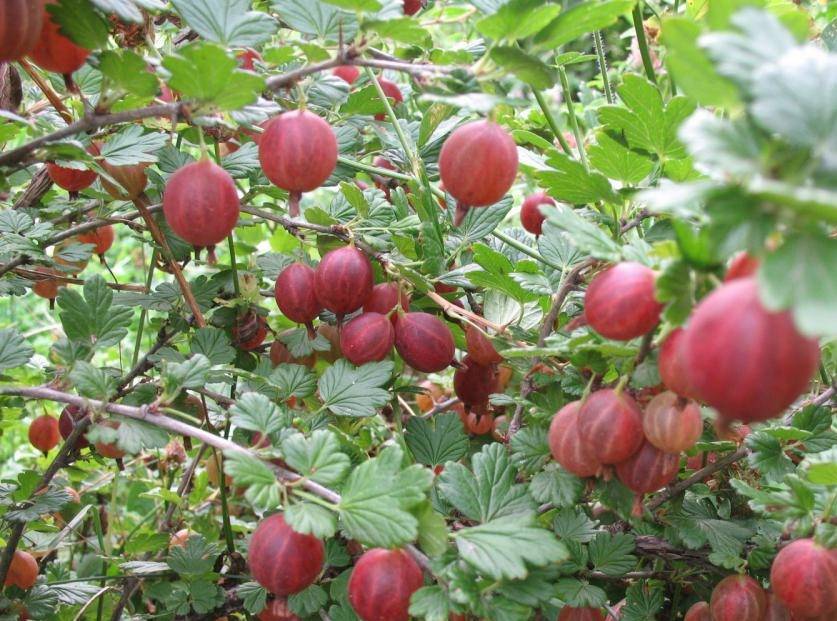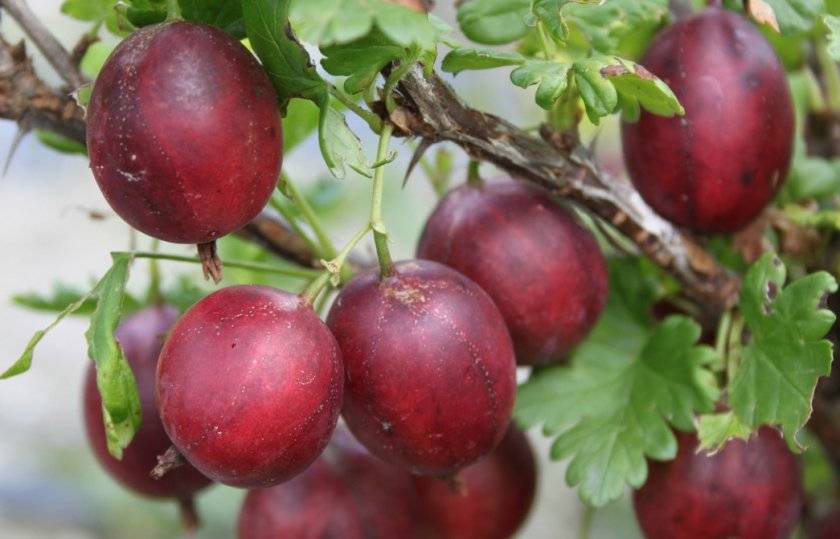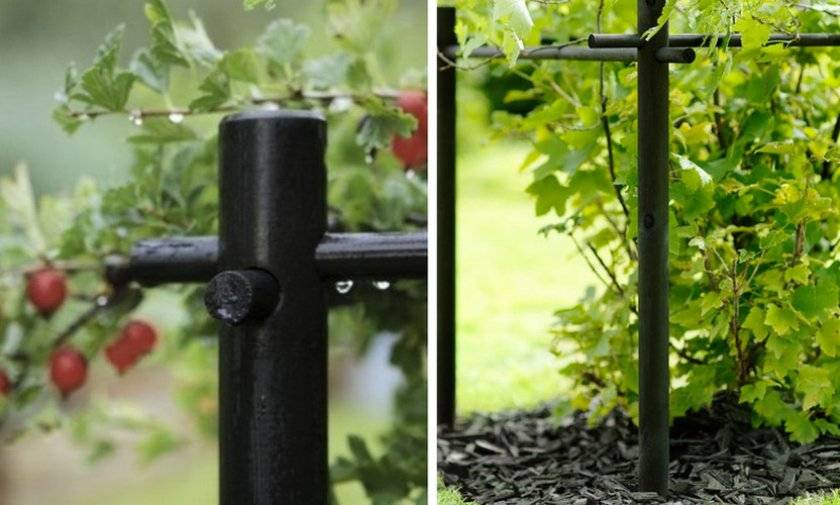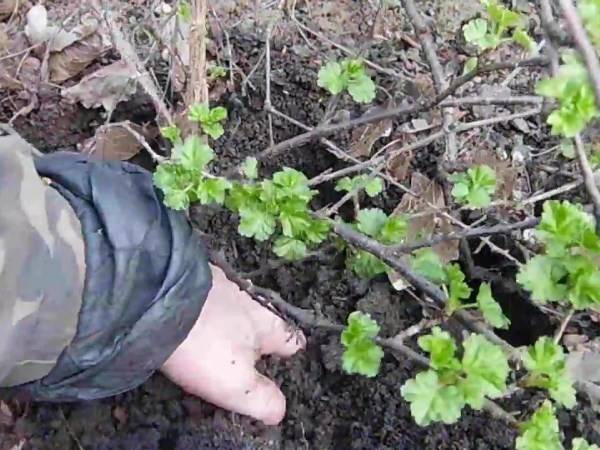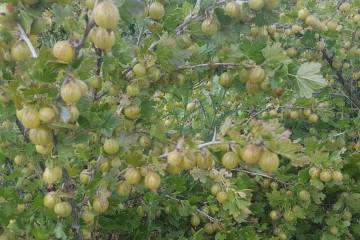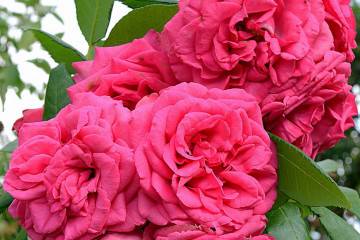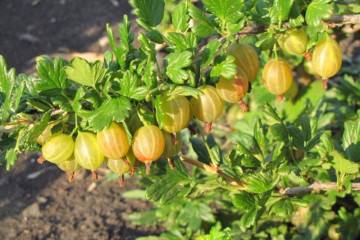Gooseberry Consul - features and characteristics of growing
Content:
Gooseberry Consul appeared on the market relatively recently, but immediately won the hearts of consumers. The bushes are unpretentious to care for, frost-resistant. The berries are delicious, versatile to use. Further information on growing crops in the garden.
Description and characteristics
A frost-resistant variety developed for cultivation in regions with unfavorable climatic conditions. Selection work was carried out at the South Ural Research Institute. The varieties Chelyabinskiy green and African were crossed. The newly bred gooseberry was entered into the State Register in 1995 under the second name - Senator.
Shoots of gooseberry bushes reach a height of 1.8 meters. Annual branches are green, starting from the second year of life, the bark acquires gray blooms. There are few thorns on the shoots. The leaves are five-lobed, colored green. Pedicels are long, thin.
Senator gooseberry fruits are round, colored in burgundy color. Their weight varies between 2.5-6.5 grams. The skin of the berries is thin, the flesh is juicy. The inside of the fruit contains a small amount of seeds.
Features of the variety
Gooseberry Senator has a lot of positive qualities, for which it is in demand among consumers.
Ripening period and yield
Flowering begins in late May or early June. The fruits are harvested from mid-July. Few berries are formed on young bushes. But already from a three-year-old gooseberry, you can collect about 6 kilograms of fruit.
Taste qualities
Consul gooseberry berries are fragrant, sweet, with a slight sourness. They taste like grapes or kiwi. Experts gave the variety a tasting rating of 4.7 points out of 5 possible.
Drought resistance and frost resistance
In the description of the Consul gooseberry, it is indicated that the variety has good winter hardiness. The bushes are able to withstand frosts down to -30 ° C. They are not afraid of spring return frosts. Drought resistance is also high. But to build up a high-quality harvest, the bushes still need to be watered in a timely manner.
Disease and pest resistance
Gooseberry Senator has good immunity, therefore, chemical treatment in large quantities is not required. Plants only weakly resist anthracnose and rust. If the weather is too dry, the bushes can be chosen by goose aphids and moths.
Using berries
Delicious and healthy fruits are consumed fresh. In addition, jam, jam, marmalade are prepared from them. Berries can also be frozen and used in winter as needed.
Advantages and disadvantages
The positive qualities of culture include the following characteristics:
- unpretentious care;
- self-pollination;
- frost resistance and drought resistance;
- good immunity;
- there are few thorns on the shoots;
- pleasant taste of berries;
- high productivity.
The disadvantages include a small mass of berries, poor transportability due to the thin peel.
Planting young seedlings on the site
They buy seedlings in a plant nursery or in a garden center from reliable sellers. 2-year-old seedlings take root best of all. Bushes with 2-3 shoots, the length of which is 20-25 cm, are chosen for planting. The branches should be elastic, the root system is well developed.
For several hours, the root system of the seedlings is placed in a container with water before planting. For disinfection, you can add several crystals of potassium permanganate to it. Gooseberry bushes are planted on the site in spring or autumn. Seedlings with a closed root system can be planted even in summer. The distance between plants is at least 1.5 meters.
The territory for planting gooseberries is selected well-lit by the sun. It is allowed that a shadow falls on the bushes for several hours a day. Therefore, gooseberries can be planted along fences, outbuildings. The main thing is that the culture is protected from cold winds.
Site preparation
The landing site is freed from vegetation, dug up. If necessary, nutrients are added to the soil. Dig a hole 2 weeks before planting the gooseberry. During this period, she will have time to settle down a little.
The bushes are planted as follows:
- dig holes measuring 50 × 50 × 50 centimeters;
- a layer of humus mixed with potassium and superphosphate is laid on the bottom;
- poured fertile soil;
- a seedling is placed in the middle, the roots are straightened;
- covered with soil, lightly tamped, watered abundantly.
The root circle is covered with mulching material: peat, straw, sawdust.
Features of seasonal care
Care consists in watering, feeding, loosening the soil, mulching. To prevent the appearance of diseases and pests, preventive spraying is performed.
Watering and feeding
Description of the gooseberry Senator indicates that this variety is drought tolerant. But with timely watering, the berries will be of better quality. It is necessary to irrigate the bushes abundantly during the flowering period, budding, after fruiting.
In spring, gooseberries are fed with nitrogen, for example, 12-15 grams of saltpeter, diluted in a bucket of water. Before flowering, potassium chloride and superphosphate are introduced into the ground. After fruiting, the bushes are fertilized with manure or humus.
After watering, the soil under the gooseberry is gently loosened. The procedure must be carried out to allow air to penetrate deep into the ground. To keep moisture in the root system, the soil around the bushes is mulched with peat, sawdust, and straw.
Senator's shoots grow upward, but under the weight of berries they can bend to the ground. Therefore, during abundant fruiting, the outer branches must be tied to vertical supports.
Preventive treatment
In the spring, gooseberries are sprayed with copper-containing preparations. This is necessary to prevent the appearance of fungal diseases. Insecticides are used for pests.
Pruning
When planting, the gooseberry shoots are shortened by a third. Throughout the season, sanitary pruning is carried out, removing dry, diseased branches. Shoots that thicken the crown are also cut off.
Preparing for winter
After fruiting, the plants are sprayed with insectofungicides. Foliage and other plant debris are removed from the root circle. In the middle of autumn, the bushes are watered abundantly with water. Then mulch with peat, humus. Gooseberries do not need shelter for the winter.
Reproduction
You can dilute the culture on the site with cuttings or layering.
By cuttings
The procedure is carried out as follows:
- shoots are cut into pieces about 15 centimeters long;
- the lower sections are dusted with a growth enhancer;
- planted at an angle of 45 degrees in a container with fertile soil;
- watered;
- cover with foil.
The cuttings are looked after. When young bushes develop well, they are planted in open ground.
Layers
In early summer, grooves are pulled out near the bushes. Shoots are laid in them, fixed with staples. Then watered, covered with earth. When young bushes appear from the layers, they are separated from the mother plant and planted separately.
Pest and disease control
Under unfavorable climatic conditions, gooseberries can be affected by diseases and pests. For prevention and treatment, the bushes are treated with insectofungicides before flowering and after fruiting. In addition, to combat adversity, you need to dig up the ground in the fall, remove foliage from the root circle.
The consul's gooseberry is in demand among gardeners for its simplicity in care, frost resistance, delicious fruits. The variety is easily propagated on the site by cuttings or layering.
